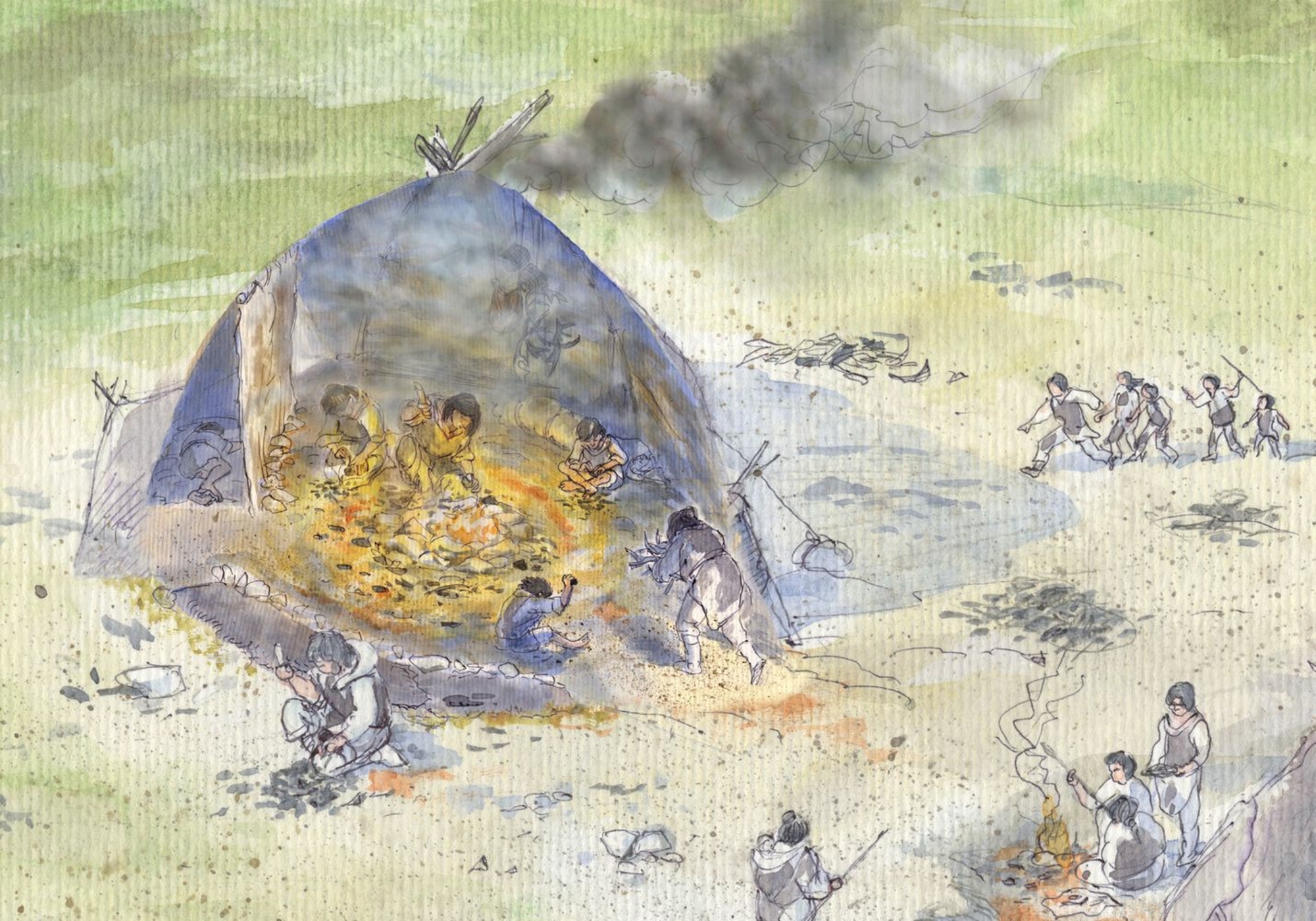
- Home
- Explore the site
- The habitations, camps and their surroundings
- The right environment for occupation and preservation
While it may appear very modest, the Ru des Hauldres still has a vast drainage basin, which drains a large proportion of the Sénart plateau.
A suitable environment for the preservation of remains
During the Tardiglacial, the environment surrounding the confluence between the Seine and the Ru des Hauldres was very different to today, and probably very changeable. The Seine valley had multiple channels running through it and the Ru des Hauldres was much more dynamic. These conditions were favourable to the depositing of large quantities of sediments (silt and sand) during flooding and to the preservation of the Étiolles site, thanks to the rapid covering up of remains as they were abandoned by the Magdalenians.
Rhythm of water, rhythm of man
Silt and sand were deposited regularly during probably seasonal flooding, thus preserving the remains of successive camps. The Magdalenians settled on new surfaces created by deposits of alluvium. This combination of regular climate-related flooding and the Magdalenians’ nomadic lifestyle led to camp remains being superposed in layers of stratigraphy.
The particular attraction of Étiolles
Magdalenian camps have not been found in all the places in the Seine valley where they could have been preserved. The Étiolles site was probably attractive for specific reasons that researchers are trying to understand. By studying the site’s stratigraphy it is possible to reconstruct the topography of the camps. The Magdalenians settled at the edge and centre of a vast basin gradually shaped by successive deposits of sediment, which probably protected them from the wind. Other advantages of the site, such as the presence of an outcrop of very good flint and the fact that the area around the confluence lent itself to hunting, were surely also important factors in the choice of location for the camps.
Partners and authors
Associated media
Open Media Library
